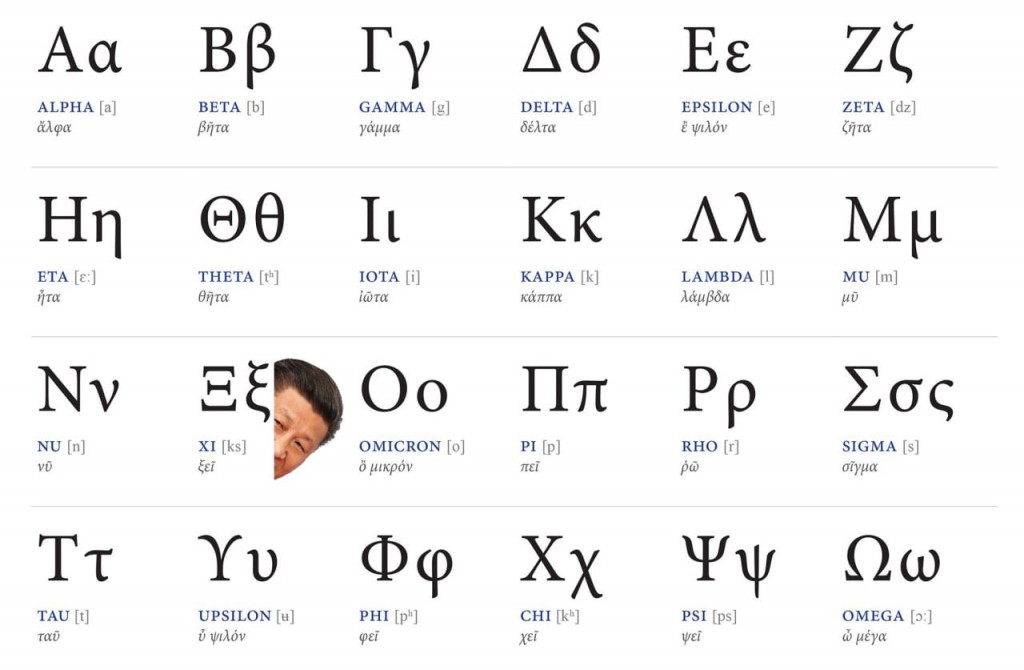Chicken hegemon
From Mark Swofford:
The back of a restaurant stand going up in front of the Banqiao train station as part of a temporary market for the Christmas season.
Read the rest of this entry »
From Mark Swofford:
The back of a restaurant stand going up in front of the Banqiao train station as part of a temporary market for the Christmas season.
Read the rest of this entry »
On one side of the Taiwan Strait, yesterday the PRC announced its draconian language policy for the coming decades:
"Important new policies on language and script in the PRC" (11/30/21)
Meanwhile, on the other side, Taiwan proclaimed a very different aspiration:
"2030 bilingual policy to help Taiwan connect with the world: NDC head", Focus Taiwan (12/1/21)
The policies are nothing new for either side, simply an intensification of their goals in recent years, the PRC more toward language standardization and monolingualism, and Taiwan more toward linguistic diversification and multilingualism.
Read the rest of this entry »
The Google Doodle for November 30 featured Lotfi Zadeh.

The Doodles page explains that
Today’s Doodle celebrates world-renowned Azerbaijani-American computer scientist, electrical engineer, and professor, Lotfi Zadeh. On this day in 1964, Zadeh submitted “Fuzzy Sets,” a groundbreaking paper that introduced the world to his innovative mathematical framework called “fuzzy logic.”
You can learn more about this contribution from the Wikipedia page on Fuzzy Mathematics. What I learned, from reading the Other Contributions section of Zadeh's Wikipedia page, was his role in the invention (discovery?) of the z-transform.
Read the rest of this entry »
Since this statement was issued by none other than the State Council (Guówùyuàn 國務院), it is evident that they attach great significance to these new rules, regulations, and directives.
The State Council, constitutionally synonymous with the Central People's Government since 1954, is the chief administrative authority of the People's Republic of China. It is chaired by the premier and includes the heads of each of the cabinet-level executive departments. Wikipedia
The translation is by Google, with a few minimal changes by me. Although not perfect, the translation should suffice to give a good indication of the seriousness which the CCP attaches to matters of language and script.
Original Chinese version: http://www.81.cn/yw/2021-11/30/content_10111766.htm
Read the rest of this entry »
I'm in Seattle, attending the 181st meeting of the Acoustical Society of America. It's been a few years since I attended an ASA meeting in person, so I'm not sure whether this is the first time they've offered pronoun stickers for attendees to add to their badges. But it's the first time I've encountered this option. The ASA's explanation:

Read the rest of this entry »
Responding to the English translation of the Chinese epitaph on "Matteo Ricci's tombstone" (11/24/21), rit malors remarks:
It's the first time I encounter the word "sobriquet" for hào 號. Later I browse the Wikipedia and find that there is an entry for hào 號 as "Art Name" (in China, Japan, Korea, and Vietnam).
Read the rest of this entry »
In a "matched guise" test, subjects are asked to evaluate "various traits including body height, good looks, leadership, sense of humor, intelligence, religiousness, self-confidence, dependability, kindness, ambition, sociability, character, and likability", for the same content presented by the same speaker in different languages, or perhaps by the same speaker associated with different pictures. The goal is to uncover linguistic or ethnic stereotypes.
This twitter "experiment" takes the idea in a different direction, using an associated picture to shift the interpretation of an ambiguous word:
— Sharon 🌹🚰 ✝️ 🛡️ (@Sharon_Kuruvila) November 23, 2021
Read the rest of this entry »
This is a supplement to "Tang (618-907) poetry in Min pronunciation" (10/14/21). The following remarks are by Conal Boyce:
So far it seems the artist’s viewpoint is missing from the discussion. At the top of the thread, Victor Mair mentions two musical compositions of mine, and also kindly cites my unpublished Ph.D. dissertation in References. But the music and the thesis (both of 1973-1976 vintage) are almost wholly unrelated. (What is related tangentially to my compositions from that period is my paper called ‘Min sandhi in verse recitation,’ Journal of Chinese Linguistics, 1980, 8:1-14.) What do I mean by ‘the artist’s viewpoint’? My main task during 1973-1976 in Taiwan was to finish writing my dissertation on the rhythms used by my informants in their recitation of Sòngcí ([VHM: Sòng lyric meters] sometimes in MSM, sometimes in Min) — nothing to do with music per se (except the abstract connection through ‘rhythm’).
Read the rest of this entry »
"WHO — You cannot be Xi-rious! The WHO’s decision to skip the Greek letter Xi in its ludicrous naming system shows exactly who controls it", by David Spencer, Taiwan News, Contributing Writer, 2021/11/28:

(source)
Read the rest of this entry »
The number of students enrolled in a given foreign language is a good index of public perceptions of the importance of that language for global politics, economics, and cultural influence. When I came to Penn in 1979, interest in all things Russian was soaring. The Slavicists occupied quite a bit of real estate in Williams Hall, which houses language studies at Penn. They had a number of institutes, research centers, libraries, and so forth, and they were extremely well funded. A decade later, with the collapse of the Soviet Union, the Russian juggernaut at Penn began to fall apart, to the extent that it lost nearly all of its space and researchers, and they were tossing whole libraries into dumpsters. As an ardent bibliophile, it pained me greatly to see precious books being thrown into the trash. I rescued as many of them as I could stuff into my Volkswagen Beetle and cart away, including an enormous, old, and undoubtedly historically important encyclopedia that still sits in the enclosed porch of my home.
Read the rest of this entry »
Today, on #LinguisticsWithSlava
The Russian word for a sports fan is "bolel'shchik." I'll explain in a minute. But first, did you know that for a long time Americans had no word for it?
Sports fans appeared in the US in the 1850s, but the word didn't come about until early XX c..— Slava Malamud (@SlavaMalamud) November 24, 2021
Slava Malamud goes on to explain the Russian relationship between fandom and pain:
The word "bolel'shchik" tells you all you need to know about the Russian approach. We did adopt the English word (in the form of "fanaty"), but it describes soccer hooligans exclusively.
"Bolel'shchik" is ours. Oh so very, very ours.
The root word is "bol", which means "pain"
"Bolet" is a verb derived from it. Its meaning is "to be ill." Therefore, "bolel'shchik" is someone who feels constant pain and/or is very sick. However, the word applies exclusively to sports supporters. A regular ill person is "bol'noi."
How Dostoyevskian is this shit?
The prevailing emotion of a Russian football fan (and this is where the word originated) is, of course, pain. Constant, unyielding feelings of sickness and discomfort that can only be understood if you ever sat on a wooden bench to watch a 0-0 slog in half-frozen mud in Saratov.
To support a sports team, in Russian culture, primarily means to experience pain, to be emotionally unwell, to subject one's mental health to voluntary mistreatment. To be unhealthily addicted to something bad.
Don't ever ask me why I root for the Buffalo Bills and Sabres again.
Read the rest of this entry »
Below is a guest post by Mark Dow, consisting of an interview with Cory Stade.
Cory Stade is a cognitive archaeologist interested in "how Palaeolithic material culture can inform our understanding of the origin and evolution of language." Formerly a Visiting Fellow at the University of Southampton at the Centre for the Archaeology of Human Origins (CAHO), she received a BA in linguistics from Simon Fraser University in Canada, with a minor in archaeology; a Masters degree in Palaeoanthropology and Palaeolithic Archaeology at University College London; and a PhD in Archaeology at Southampton in 2017 with a thesis addressing "the different modes of culturally transmitted lithic material made experimentally by novice modern knappers." She currently runs an academic proofreading business and, with her partner, a jewelry business called the Stone Age Ceramic Studio.
In her 2020 article "Theory of mind as a proxy for Paleolithic language ability," Stade argues as follows:
The development of "theory of mind" (the term for our ability to infer the mental states of others) in typical human children can be mapped onto the evolution of cognition in humans by examining the stone tool fossil record. This, in turn, can teach us about the evolution of language because of the extent to which theory of mind and language ability are intertwined and predictive of each other.
This interview was conducted via email in the Spring of 2021.
Read the rest of this entry »
 Making coffee this morning made me think about brewing — not the process, but the English verb brew and its semantic evolution. In particular, it made me wonder again about nativist versions of semantic atomism, which hold that word meanings are (perhaps structured) collections of innate atomic features. Versions of these ideas go back thousands of years, but their most prominent recent exponent was Jerry Fodor.
Making coffee this morning made me think about brewing — not the process, but the English verb brew and its semantic evolution. In particular, it made me wonder again about nativist versions of semantic atomism, which hold that word meanings are (perhaps structured) collections of innate atomic features. Versions of these ideas go back thousands of years, but their most prominent recent exponent was Jerry Fodor.
The Internet Encyclopedia of Philosophy's article puts it this way:
Fodor was also a staunch defender of nativism about the structure and contents of the human mind, arguing against a variety of empiricist theories and famously arguing that all lexical concepts are innate. Fodor vigorously argued against all versions of conceptual role semantics in philosophy and psychology, and articulated an alternative view he calls “informational atomism,” according to which lexical concepts are unstructured “atoms” that have their content in virtue of standing in certain external, “informational” relations to entities in the environment.
Read the rest of this entry »